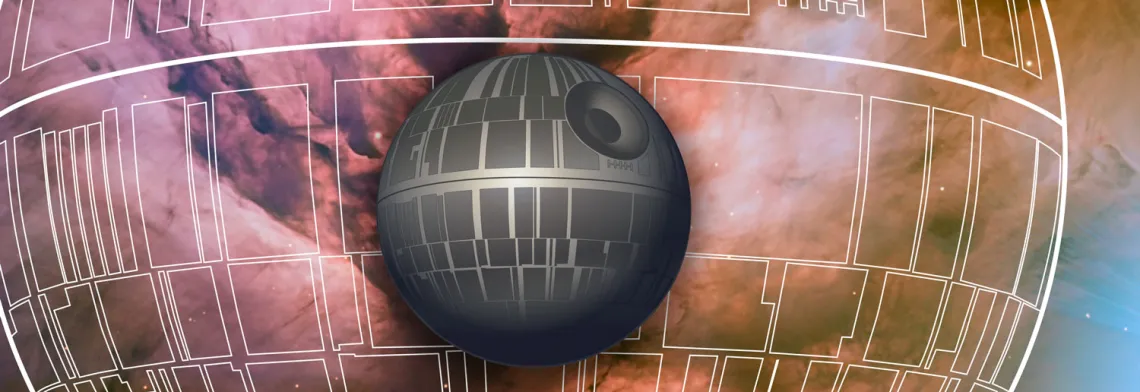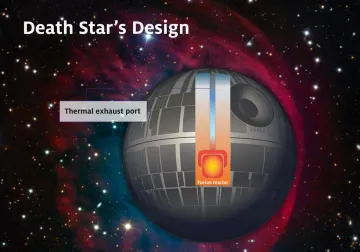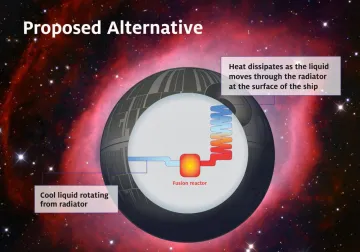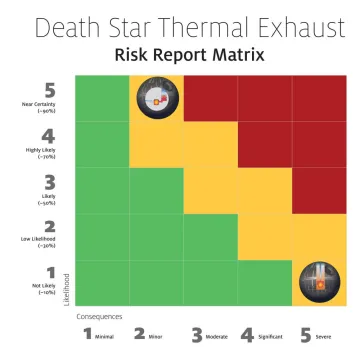Risk Analysis of the Death Star Thermal Exhaust Port Design
Why the Death Star thermal exhaust port was "lazy, terrible design"—Roberto Furfaro, UA Space Systems Engineer, considers the Death Star’s flawed design

Engineers behind the Death Star infamously slapped a series of “thermal exhaust ports”—glorified holes—across the surface of their fictitious spacecraft. The holes were purportedly for ventilation, so when Luke Skywalker was able to exploit them so catastrophically in the original “Star Wars,” fans speculated: Was there not a better way?
“First of all, the scale of what we’re able to build in real life versus ‘Star Wars’ is completely different,” says Roberto Furfaro, an assistant professor in the UA’s College of Engineering and the director of the Space Systems Engineering Lab. Furfaro currently works as a systems engineer on NASA’s latest New Frontiers mission: OSIRIS-REx.
As of now, the International Space Station is the largest man-made object in space. It weighs nearly a million pounds and is as long as a football field.
More than an acre of solar panels power the ISS, while a made-up “hypermatter reactor” is the primary power generator aboard the moon-size Death Star. Fair enough, says Furfaro. The energy requirements of a spacecraft the size of the moon would be huge, and it could be that the Death Star was not close enough to a star to collect substantial solar energy.
Hypermatter power, which functions something like fusion power, isn’t itself too problematic. Although currently we aren’t able to generate power via fusion, “it can, in principle, be conceived.” The real problem is heat. The more energy you create, the more heat you build up. How the engineers of the Death Star chose to deal with that heat was lazy, “terrible” design, according to Furfaro.

A diagram of the Death Star floating in a galaxy shows its original design, featured in the film: a fusion reactor leading to a thermal exhaust port, exposed to its external environment.
“A spacecraft is an extremely complex system,” says Furfaro. “A good space engineer would do a thermal analysis, starting by studying the mission. Where are you going? What is the thermal environment there? Everything on the spacecraft has a minimum and maximum temperature that it can operate at, so you have to create a thermal design that allows each individual element on the spacecraft to still operate.”
Poking holes in the Death Star to exhaust heat was a gross shortcut, and they paid the price.
In real life, holes in a spacecraft would be out of the question. “In space, you generally don’t want to get rid of thermal energy through an open exhaust port because then you’re effectively wasting fluids in a zero-pressure environment. If you chose to do that, you’d need a continuous resupply of the exhausted fluids from Earth, which would be very inefficient and costly,” says Furfaro.

A diagram of the Death Star floating in a galaxy shows Furfaro’s proposed alternative design: the fusion reactor is connected to a radiator that uses and dissipates heat as necessary.
More realistically, he says, the engineers should have used radiators that could dissipate or use heat economically, depending on the thermal environment. That’s how temperatures get stabilized on a spacecraft.
And while the spacecrafts Furfaro contributes to are not designed for defense, risk analysis is essential. Engineers analyze individual risks by mapping them as points on a graph, where likelihood and consequence converge.

A risk report matrix showing the likelihood of risk from an attack and the severity of the consequences if an attack occurs.
Ideally, most risks are unlikely and have small consequences.
In the case of the Death Star’s thermal exhaust ports, Furfaro guesses, “The consequence [of an attack] was very severe, but they deemed it an unlikely risk, probably because the large-scale defense system was thought to be refined enough to protect the ports.” They deemed it so unlikely, in fact, that they did not change the design to address that particular risk. Huge mistake, he says: “From a defense perspective, the Death Star is flawed. The thermal exhaust ports are a weak point, and so they were exploited.”

